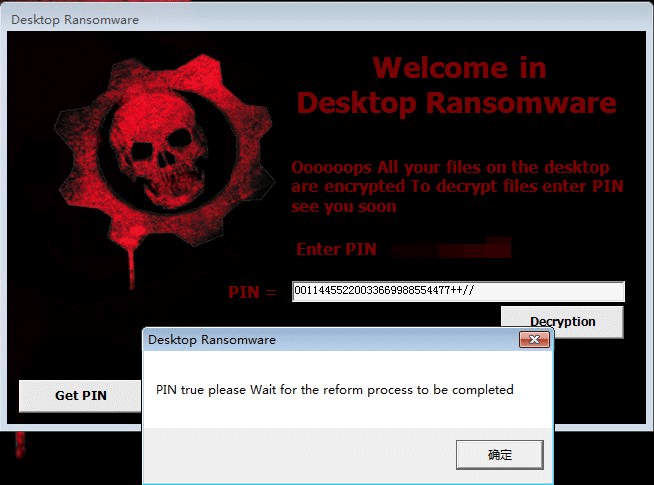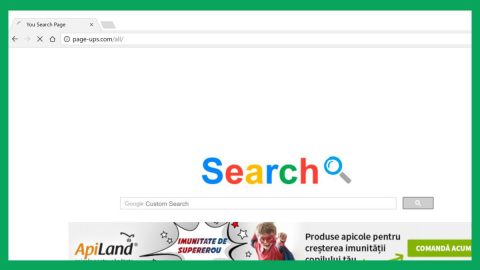What is Desktop ransomware? And how does it carry out its attack?
Desktop ransomware is a file-locking virus that renders files useless after it encrypts them. This crypto-malware was discovered in the first week of November 2018. This threat adds the “Lock.” Prefix to its encrypted files. It uses AES cryptography in locking its targeted files.

Once it infiltrates a computer system, it begins to carry out its attack by adding some of its malicious components into system folders. These malicious components may be used to launch or repress processes. It could also make entries and modify existing ones in the Windows Registry which allows it to continue executing its attack the instant a victim starts or turns on the infected computer. This makes Desktop ransomware a persistent and dangerous threat.
Desktop ransomware may target common user-generated files like images, videos, documents, databases, audio, and many more. Once it finds its targeted files, it encrypts them right away using the AES cipher. It then displays a GUI window which shows a ransom message that states:
“Welcome in
Desktop Ransomware
Oooooops All your files on the desktop
are encrypted To decrypt files enter the PIN
see you soon
Enter PIN
PIN =
Decryption
Get PIN”
When you click on the “Get PIN” button, it causes the infected system to load the default web browser and redirects you to a Facebook profile which at the time of writing, has already been removed. According to security experts, the long-gone Facebook profile might be related to the developers of Desktop ransomware. If you are one of the unfortunate victims of this crypto-malware, you need not worry as security experts were able to come up with the PIN so that you can get access to your computer and restore encrypted files.
How is the malicious payload of Desktop ransomware distributed?
The malicious payload of Desktop ransomware may be distributed using a payload dropper that initiates the malicious scripts used to run Desktop ransomware in the system. Aside from that, it might also be distributed using social media sites and file-sharing services. Thus, you need to be cautious of what you download on the internet and make sure to always keep both your system and security programs up-to-date.
To effectively kill Desktop ransomware from your PC, make sure to follow the removal instructions below.
Step_1: Type in the code 00114455220033669988554477++// in the field and then click the Submit Key button to regain access to your computer.
Step_2: Pull up the Task Manager by tapping Ctrl + Shift + Esc keys on your keyboard.
Step_3: Go to the Processes tab and look for the process named Desktop Ransomware.exe and then end its process.
Step_4: Exit the Task Manager and open Control Panel by pressing the Windows key + R, then type in appwiz.cpl and then click OK or press Enter.
Step_5: Look for any dubious programs that might be related to Desktop Ransomware and then uninstall it.
Step_6: Close the Control Panel and tap Win + E keys to open File Explorer.
Step_7: Navigate to the following locations and look for Desktop ransomware’s installer and malicious components like Desktop Ransomware.exe and other related files and delete them all.
- %TEMP%
- %APPDATA%
- %USERPROFILE%\Downloads
- %USERPROFILE%\Desktop
Step_8: Close the File Explorer.
Before you proceed to the next steps below, make sure that you are tech-savvy enough to the point where you know exactly how to use and navigate your computer’s Registry. Keep in mind that any changes you make will highly impact your computer. To save you trouble and time, you can just use Restoro, this system tool is proven to be safe and excellent enough that hackers won’t be able to hack into it. But if you can manage Windows Registry well, then by all means go on to the next steps.
Step_9: Tap Win + R to open Run and then type in Regedit in the field and tap enter to pull up Windows Registry.
Step_10: Navigate to the listed paths below and look for the registry keys and sub-keys created by Desktop ransomware.
- HKEY_LOCAL_MACHINE\Software\Microsoft\Windows\CurrentVersion\Run
- HKEY_CURRENT_USER\Software\Microsoft\Windows\CurrentVersion\Run
- HKEY_LOCAL_MACHINE\Software\Microsoft\Windows\CurrentVersion\RunOnce
- HKEY_CURRENT_USER\Software\Microsoft\Windows\CurrentVersion\RunOnce
- HKEY_LOCAL_MACHINE\SOFTWARE\Microsoft\Windows\CurrentVersion\Authentication\LogonUI\Background
- HKEY_LOCAL_MACHINE\SOFTWARE\Policies\Microsoft\Windows\Personalization
- HKEY_CURRENT_USER\Control Panel\Desktop\ScreenSaveTimeOut
- HKEY_CURRENT_USER\Control Panel\Desktop
Step_11: Delete the registry keys and sub-keys created by Desktop ransomware.
Step_12: Close the Registry Editor.
Step_13: Empty your Recycle Bin.
Try to recover your encrypted files using the Shadow Volume copies
Restoring your encrypted files using Windows Previous Versions feature will only be effective if Desktop ransomware hasn’t deleted the shadow copies of your files. But still, this is one of the best and free methods there is, so it’s definitely worth a shot.
To restore the encrypted file, right-click on it and select Properties, a new window will pop up, then proceed to Previous Versions. It will load the file’s previous version before it was modified. After it loads, select any of the previous versions displayed on the list like the one in the illustration below. And then click the Restore button.
Congratulations, you have just removed Desktop Ransomware in Windows 10 all by yourself. If you would like to read more helpful articles and tips about various software and hardware visit fixmypcfree.com daily.
Now that’s how you remove Desktop Ransomware in Windows 10 on a computer. On the other hand, if your computer is going through some system-related issues that have to get fixed, there is a one-click solution known as Restoro you could check out to resolve them.
This program is a useful tool that could repair corrupted registries and optimize your PC’s overall performance. Aside from that, it also cleans out your computer for any junk or corrupted files that help you eliminate any unwanted files from your system. This is basically a solution that’s within your grasp with just a click. It’s easy to use as it is user-friendly. For a complete set of instructions in downloading and using it, refer to the steps below
Perform a full system scan using Restoro. To do so, follow the instructions below.












